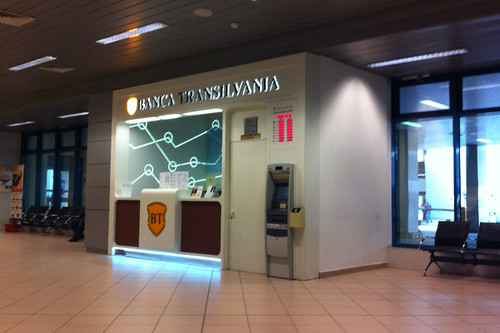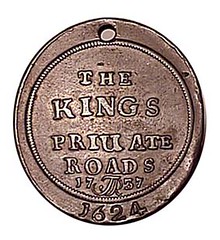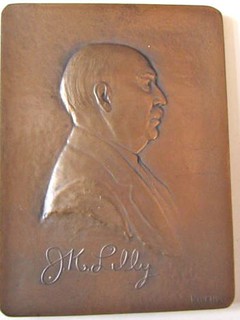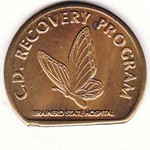
PREV ARTICLE
NEXT ARTICLE
FULL ISSUE
PREV FULL ISSUE
NOTES FROM E-SYLUM READERS: MARCH 22, 2015Josiah K. Lilly Jr. (1893-1966)
Josiah K Lilly Sr. (1861-1948) Depicted on the plaquette Josiah K. Lilly Jr. (1893-1966) The numismatist Josiah K. Lilly III (1916-1995) Josiah K. Lilly IV DOB 1950 Josiah K. Lilly V Mr. Weinberg was just a generation too early. Not often that happens.
It's easy to make these mistakes - same company, same name, different person. But no one should let the fear of a mistake prevent
sharing discoveries with our readers - this is by nature an informal forum. Often it's only by publishing something that the truth
can be teased out, and that helps every numismatist, today and tomorrow. Thanks, everyone! -Editor
To read the earlier E-Sylum article, see:
CoinWeek Highlights Mental Hospital Tokens

CoinWeek does a great job choosing and highlighting one E-Sylum article to republish each week. The new images they create are great. This time they went "crazy" and chose the article on Mental Hospital Tokens. Editor Hubert Walker added this comment about the unusual shape of the Brainerd State Hospital token. He writes:
To read the complete CoinWeek article, see:
To read the earlier E-Sylum article, see:
April 14
President Lincoln was shot on April 14, 1865, but died the next day, April 15th. -Editor
Paul adds: By the way, that date in 43 B.C. the Battle of Forum Gallorun occurred, also, in 1018 A.D. German Emperor Conrad II the Sailor crowned his son Henry III king and in 1828 Noah Webster copyrighted the first American dictionary and, finally, not counting your daughter's birthday, the Detroit Red Wings set an NHL league record 62 games in 1996. To read the earlier E-Sylum article, see:
Joseph Segel and the Franklin Mint
Interesting about the Franklin Mint. From the mid-1960s when they were the General Numismatics Corporation to 1978, when a feature on CBS “60 Minutes” brought the company crashing to the ground, the Franklin Mint, under marketing genius Joseph Segel (who later founded QVC), was a dominant influence in the rare coin market. In one year the FM was the best performing stock on the NYSE. The numismatic history of the FM and the incredible business success of Joe Segel in multiple endeavors would make a great book. To read the earlier E-Sylum article, see:
Fourteen Bits
How exactly does "Fourteen bits" represent the 1976 bicentennial coinage? Bicentennial Dollar = 8 bits
Correct! Thanks also to Pete Smith, Jeff Starck and Chip Howell. -Editor
To read the earlier E-Sylum article, see:
Harry Manville and the Katen Book Auction Regulars
I want to comment on the news of the death of Harry Manville, I remember him as being a regular attendee at the Frank Katen auctions. Although I did not have long conversations with him, as our collecting interests were completely different, he seemed to be a fine English gentleman. He must have been bidding for others beside himself, as he always had at least three different bidder numbers. A library of over TWO TONS, Wow, that's a LOT! Thinking of the Katen auctions, there was a group of about 8-10 who usually attended. Now the group still with us is shrinking. First Ken Lowe, then more recently Gordon Frost, John Huffman, and now Harry. It makes me feel like a survivor. To read the earlier E-Sylum articles, see:
Banca Transylvania, Bucharest, Romania
After clearing customs I see this counter and ATM of the Bank of Transylvania. Considering that Transylvania is Dracula’s neighborhood, I am wondering if this is also a blood bank? 
Pre-1960 Nickels
It is rather fortuitous that you mention Wayne Herndon is buying 5-cent coins for six cents. When I was a cashier at Walgreens in high school and college (1997 to 2003), I bought every pre-1960 5-cent coin that came through the drawers. It is a practice I have retained even today, though the volume is minimal compared to the amount that I had access to back then. Just this weekend I was sorting through a pile of my coins and came across these, some $60 face value or so, and was wondering whether to keep them or cash them in. There would have to be a LOT MORE of them to cover the shipping cost with the 20 percent (but nominal) profit per coin. To read the earlier E-Sylum article, see:
Surveyors of the King's Private Roads
Several examples of the King's Private Roads metal passes have been posted recently with images in the Facebook group Transportation Token Collectors. One of the queries entered was the highest known counterstamped serial number. So far the Rich Hartzog 1624 takes honours. The 'TR' initials between the 17 and 37 stand for Thomas Ripley, surveyor of the King's Private Roads from 1737. The 1731 example carries 'RA' for Richard Arundell, Surveyor of the King's Private Roads, 1731-37. I invite E-Sylum readers to the Transportation Token Collectors Facebook group, open to all.  
To read the earlier E-Sylum articles, see:
Numismatology and Numismatic Paperweights
Over the past four decades, I have acquired a half dozen numismatic paperweights, loosely so-called. Acquired from several different countries, they adorn my worktable and are often useful. One of my favorites came to mind as I read about “Numismatology and William Sunday” in last week’s E-sylum. It is the original obverse die used to strike the medal depicted in the article; and nestled in it is a specimen of said medal. Some years ago, Frank Van Zandt happened to mention that several Rochester Numismatic Association dies were coming up for sale at a club meeting and I asked him to buy one for me. Soon thereafter, a heavy die arrived in the mail and, later, Frank managed to get me one of the medals struck from it. The pair weigh in at over 4.5 pounds, really too heavy for their stated purpose. It is used mainly when I am pasting a bookplate into new acquisitions in my numismatic reference library. It also serves to eloquently explain to neophytes, with nary a word being spoken, how coins and medals are made. Scott Miller writes: Regarding the William Sunday bookplate, I have never seen it before. However, I do have a bound volume of Numismatology, a British publication edited by T. Forster in Colchester beginning in 1892. The book contains 3 years of issues, which I believe was the entire run. To read the earlier E-Sylum article, see:
Wayne Homren, Editor The Numismatic Bibliomania Society is a non-profit organization promoting numismatic literature. See our web site at coinbooks.org. To submit items for publication in The E-Sylum, write to the Editor at this address: whomren@gmail.com To subscribe go to: https://my.binhost.com/lists/listinfo/esylum All Rights Reserved. NBS Home Page Contact the NBS webmaster 
|


